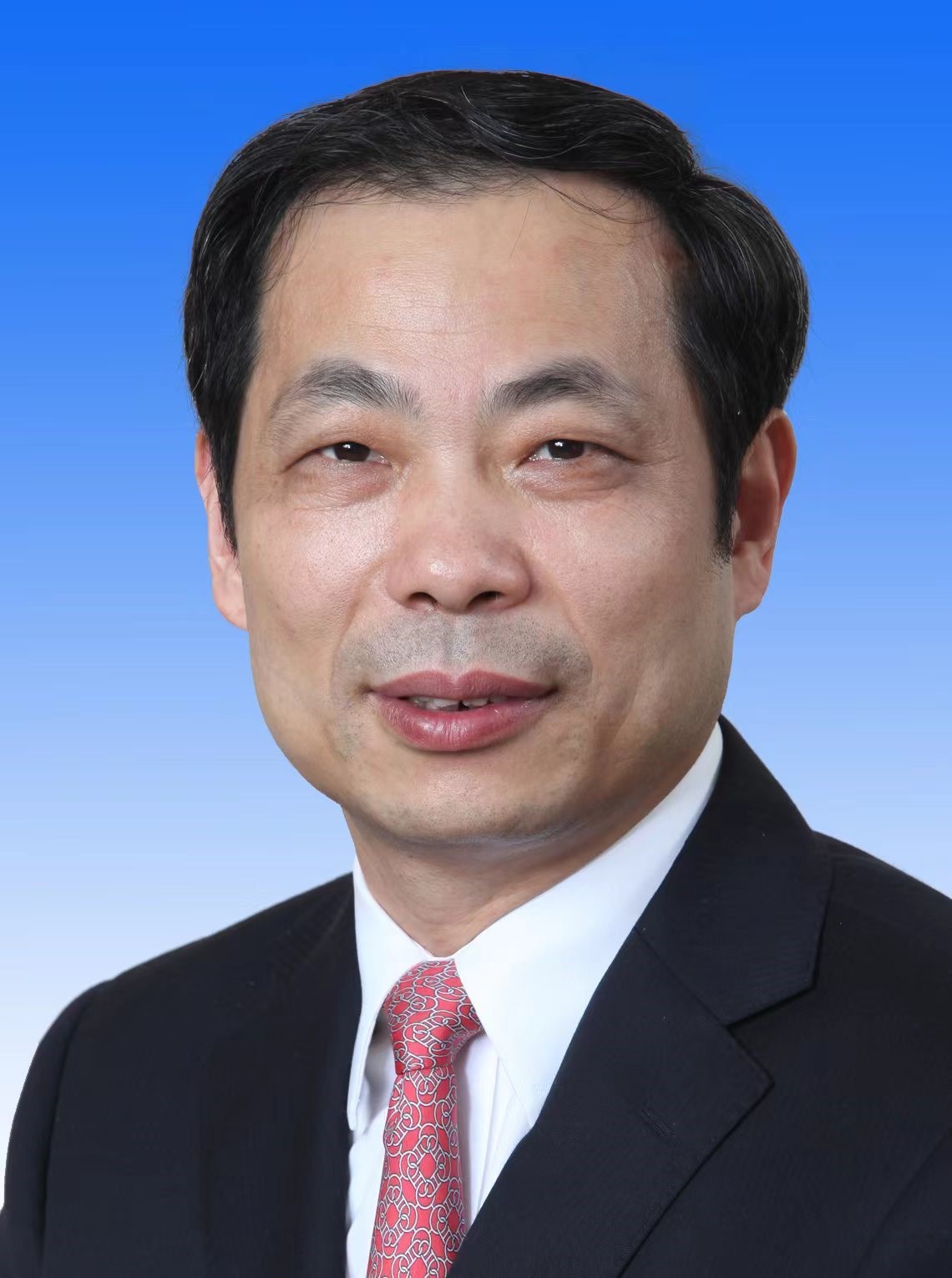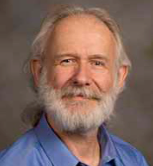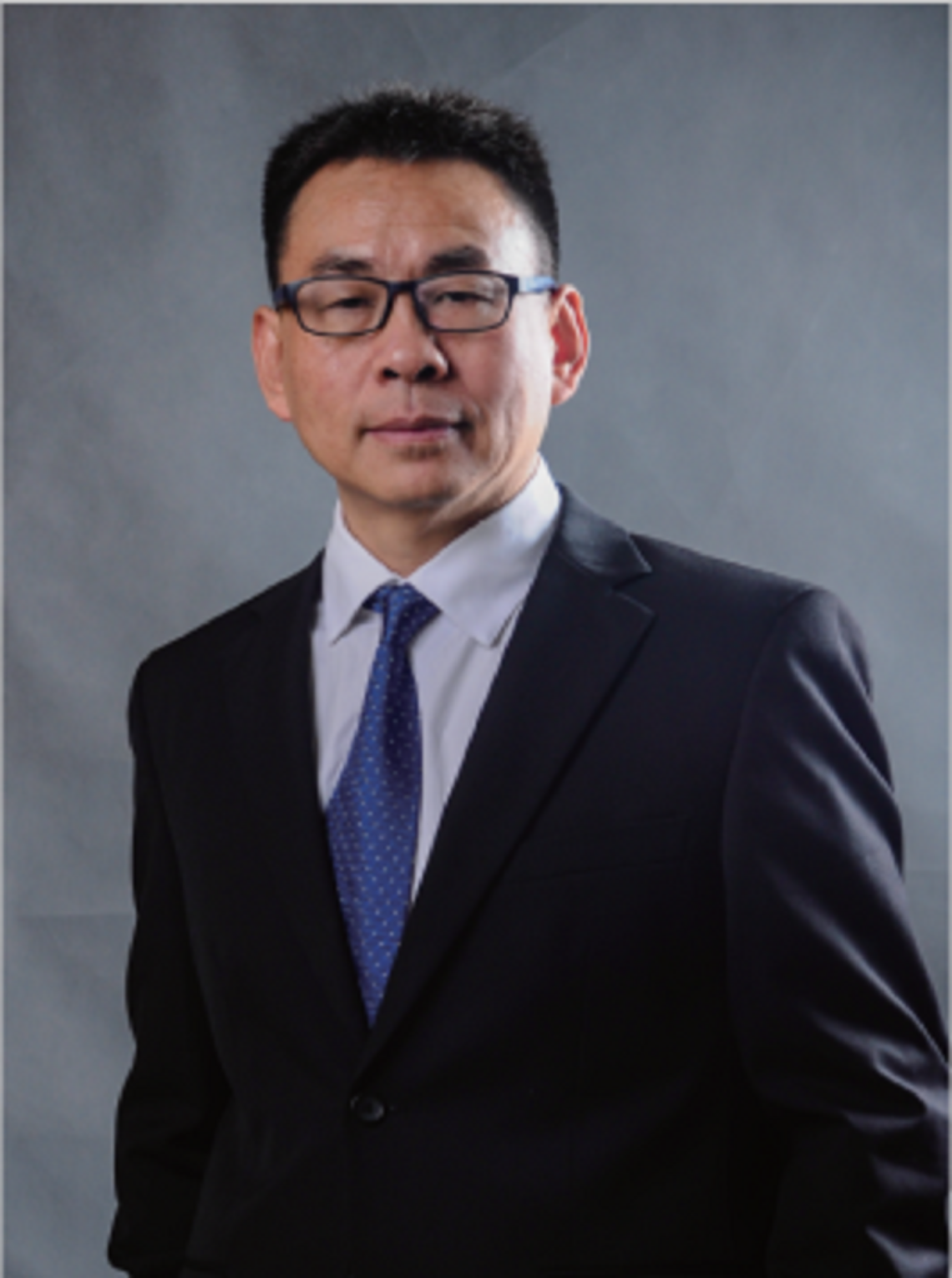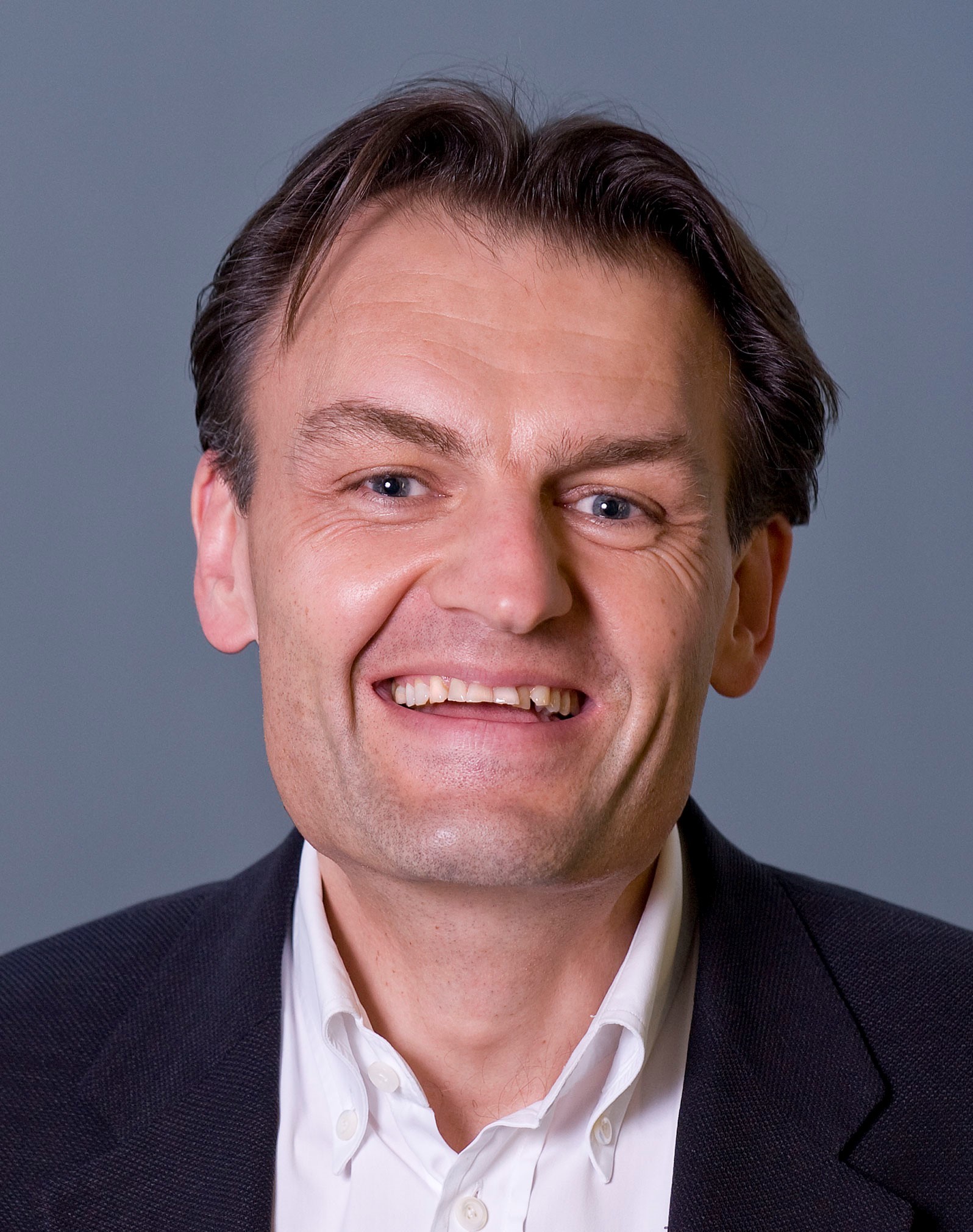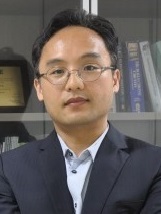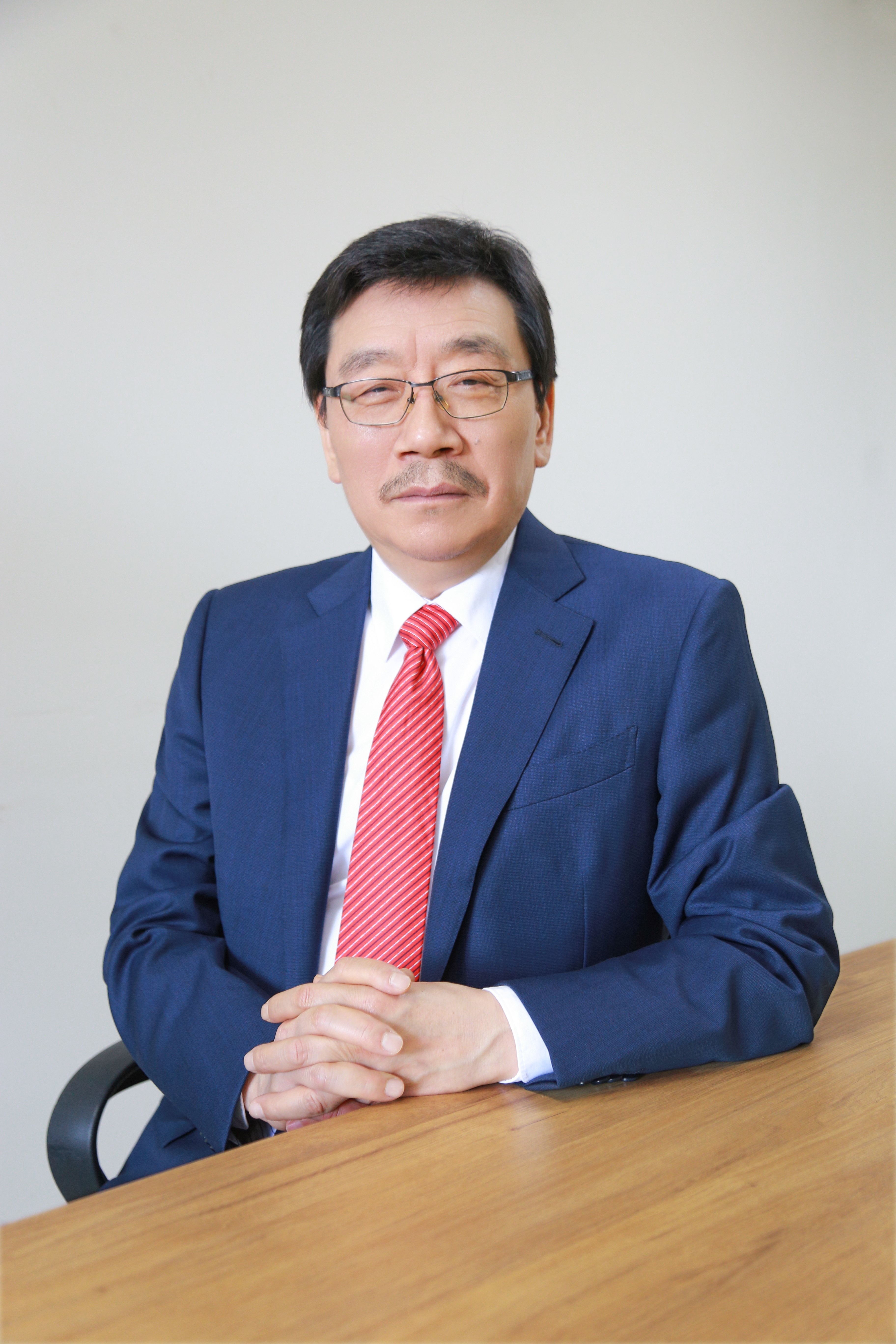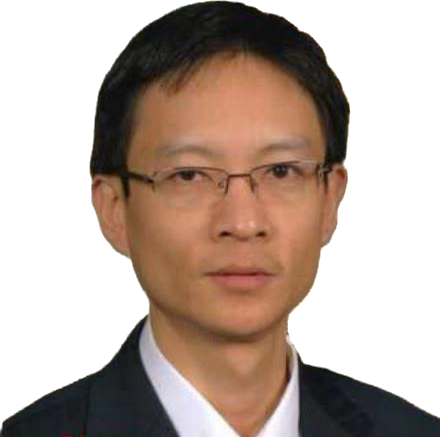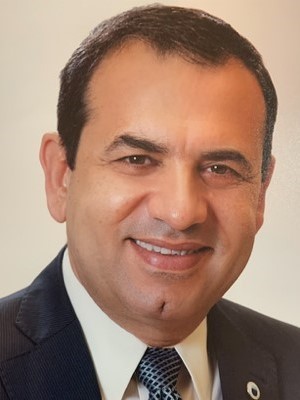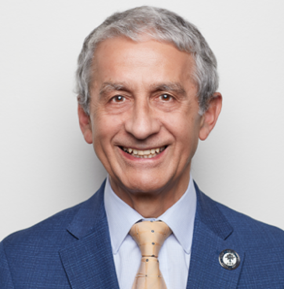Keynote Speakers
CRRC Zhuzhou Institute Co, LTD, China
read more
Biography
Dr. Rongjun Ding is an academician of Chinese Academy of Engineering. His main research interests include power electronics and control technology. He is the director of the National Key Laboratory of Power Semiconductor and Integrated Technology, the chairman of the Power Semiconductor Industry Alliance, and the editor-in-chief of the journal “Locomotive Electric Transmission”. He is currently the chief scientist of CRRC and the dean of the School of CRRC Times Microelectronics, Southwest Jiaotong University.
Prof. Ding has long been engaged in innovative research and achievement transformation of power electronic devices, traction converter and AC transmission systems. He created a Chinese standard system and a technical model in line with the international standards. He has made significant contributions to the breakthrough development of Chinese railway from general load to heavy load, and from normal speed to high speed. He has presided and participated in more than 30 major scientific research projects at the national and provincial levels. He has received 1 National Invention Award, 2 second prize of National Science and Technology Progress Award, 3 provincial and ministerial outstanding prizes, 8 first prizes and 4 second prizes. He received the honorary titles of "He Liang Heli Science and Technology Award", "Zhan Tianyou Science and Technology Achievement Award", "MAO Yisheng Science and Technology Award", "National Candidate of the New Century Hundred Million Talents Project", "National Model Worker", "the most beautiful railway science and Technology Worker" and "China Metro 50 years Tribute Figure".
Lecture Abstract
Combined with the key application needs of high-end equipment fields such as rail transit and new energy vehicles, this report makes a comprehensive description of the development of power semiconductor chip design, module packaging and the related key technologies. It also puts forward constructive suggestions on a number of issues for future development.
Virginia Tech – CPES, USA
read more
Biography
Dushan Boroyevich received his Dipl. Ing. degree from the University of Belgrade in 1976 and his M.S. degree from the University of Novi Sad in 1982, in what then used to be Yugoslavia. He received his Ph.D. degree in 1986 from Virginia Tech, Blacksburg, USA. From 1986 to 1990, he was an assistant professor and director of the Power and Industrial Electronics Research Program at the University of Novi Sad. He then joined the Bradley Department of Electrical and Computer Engineering at Virginia Tech as associate professor. He is now University Distinguished Professor and Associate Vice President for Research and Innovation in Energy Systems at Virginia Tech. He was the president of IEEE Power Electronics Society for 2011-12.
Prof. Boroyevich is a member of the US National Academy of Engineering and is recipient of 4 honorary professorships in China and Taiwan, as well as numerous other awards, including the IEEE William E. Newell Power Electronics Technical Field Award and the European Power Electronics Association Outstanding Achievement Award. His research interests include electronic power distribution systems, multi-phase power conversion, power electronics systems modeling and control, and integrated design of power converters. Dushan was a mentor for almost 50 Ph.D. dissertations and 50 M.S. theses.
Lecture Abstract
One day every human being will be able to have as much energy as they need for enjoyable work and happy life, without harming the planet Earth that sustains us. The renewable technologies developed over the last 30 years can be sustainably and economically scaled-up to generate sufficient energy for all future human needs. Missing are the technologies to transport and distribute the free energy coming continuously from Sun to ten billion humans of tomorrow.
Today, only ~20% of the total human energy consumption is from electricity. Since almost all sustainable energy is first converted to electricity, we may need to build 4-10 additional grids in the next 30 years! But, constant-frequency synchronous electromechanical grid cannot balance constantly varying distributed generation with variable consumption instantaneously, and anyway, why would we build additional new power systems using the 150-year old technology?
This presentation will outline possible power electronics solutions for transporting the energy from renewable electricity generation through a global network of undersea and underground electrical HVDC lines connected by electronic energy routers. The new electronic power system, could collect energy from wherever the sun is shining and wind is blowing and deliver it instantly, at the speed of light, to customers anywhere around the world. Just as we are now using Internet to talk and look at each other anywhere around the world.
Wuhan University, China
read more
Biography
Prof. Sheng Liu received the Ph.D. degree from Stanford University, USA in 1992. He was selected as a Distinguished Professor of Changjiang Scholars in 2004, and was selected as one of the first batch of "Thousand Talents Program". He was elected as ASME Fellow (2009), IEEE Fellow (2014), and academician of the Chinese Academy of Sciences (Ministry of Technical Science) on November 22, 2023. Prof. Sheng Liu has published more than 740 articles, applied for and authorized more than 400 Chinese invention patents and U.S. patents. He organized and hosted 8 international conferences, and authored 6 monographs. He won the White House Presidential Professor Award (1995), American ASME Young Engineer Award (1996), International Society of Microelectronics and Packaging (IMAPS) Technical Contribution Award (1997), China Outstanding Youth Fund (1999), NSF Young Scientist Award (1995), IEEE CPMT Outstanding Technical Achievement Award (2009), and Electronic Packaging Technology Special Achievement Award from Chinese Institute of Electronics (2009). He Won the first prize of China Federation of Logistics and Purchasing (2009), the second prize of Electronic Information Science and Technology of China Institute of Electronics (2009), the First prize of Technological Invention Award of the Ministry of Education (2015), the second prize of National Technological Invention Award (2016), and the first prize of Technological Invention of China Institute of Electronics (2018). In addition, he won the first prize of the National Science and Technology Progress Award (2021), the Most beautiful Scientist in Hubei Province (2022), and the title of "Wuhan Model" (2022).
Lecture Abstract
This lecture first briefly introduces the development of semiconductor materials, power electronic devices and their applications. It focuses on the three major industry pain points in the application of power electronic devices, thereby leading to DFX, that is, the design and manufacturing of power electronic chips and packages based on digital twin technology, and the importance to the development of the industry. At the same time, the report introduces in detail the development and application of digital twin technology in the field of power electronics technology. It includes the innovative theory of chip and package design and manufacturing technology based on digital twin, the digital twin technologies in material analysis, characterization and testing. It also covers the chip and package reliability and manufacturability design, virtual manufacturing, key equipment research and development. The future development direction of power electronics field facing the pain point of the industry is then put forward.
ETH Zurich, Power Electronic Systems Laboratory, Switzerland
read more
Biography
Johann W. Kolar is a Fellow of the IEEE, an International Member of the US NAE and a Full Professor and Head of the Power Electronic Systems Laboratory at the Swiss Federal Institute of Technology (ETH) Zurich. He has proposed numerous novel converter concepts incl. the Vienna Rectifier, has spearheaded the development of x-million rpm motors, and has pioneered fully automated multi-objective power electronics design procedures. He has personally supervised 90 Ph.D. students to completion, has published 1000+ IEEE journal and conference papers and 4 book chapters, and is named as inventor or co-inventor in 200+ granted patents assigned to international industry research partners. He has served as IEEE PELS Distinguished Lecturer from 2012 - 2016. He has received numerous awards incl. 45+IEEE transactions and conference Prize Paper Awards, the 2016 IEEE William E. Newell Power Electronics Award, and 2 ETH Zurich Golden Owl Awards for excellence in teaching.
Lecture Abstract
Urbanization is a megatrend of the 21st century with a projected 68% of the global population living in urban areas by 2050 [1]. The associated increase in population density will further intensify road traffic congestion and the associated productivity losses which already today are problematic. This boosts interest in Urban Air Mobility (UAM) utilizing the three-dimensional air space for transportation and allowing to bypass overcrowded streets with currently 250 companies conducting research and a projected yearly market volume of 90 billion USD by 2050. In this context, all-electric Vertical Takeoff and Landing (eVTOL) aircraft allow to leverage the specific advantages of helicopters, i.e., vertical take-off and landing with low space requirements, and airplanes, i.e., energy efficient fixed-wing cruising. Moreover, electric drive trains are advantageously, highly efficient and with an increase in sustainable electric energy generation (and thanks to air travel on a direct and/or straight trajectory towards the target destination) eVTOL aircraft may even compete with internal combustion and electric vehicles in terms of energy consumption and greenhouse gas emissions.
The talk first introduces key eVTOL aircraft designs currently in the R&D, prototyping or production planning phases, discusses trade-offs of key performance indicators and highlights critical enabling technologies like high gravimetric energy density and/or high-power-density batteries and fuel cells, low-specific-weight electric motors, and advanced power electronics. Hybrid battery/fuel cell power supplies of eVTOL aircraft enable high peak power capability as well as long-range operation. However, the typically wide and overlapping voltage ranges of the batteries and the fuel cells require interconnecting bidirectional DC-DC converters with buck-boost capability.
Accordingly, the second part of the presentation comparatively evaluates performance limits of fully soft-switched, flying-capacitor-multilevel, and partial-power-processing buck-boost candidate converter topologies by means of comprehensive Pareto optimizations considering mission profile efficiency and gravimetric power density, and finally presents a 15kW 450V...730V / 480V...800V three-level flying capacitor converter module of a 150kW system featuring 98.5% efficiency and an unprecedented gravimetric power density of 62kW/kg.
Finally, a summary of first assessments of the primary energy and Greenhouse Gas Emissions impacts of eVTOLs vs. ground-based light-duty vehicles for passenger mobility is presented, which surprisingly indicates partly higher energy efficiencies than equivalent terrestrial alternatives at faster and more predictable travel times, and indicates a possible niche role of eVTOLs in future sustainable urban transportation.
The University of Tokyo, Japan
read more
Biography
Makoto Takamiya received the B.S., M.S., and Ph.D. degrees in electronic engineering from the University of Tokyo, Japan, in 1995, 1997, and 2000, respectively. In 2000, he joined NEC Corporation, Japan, where he was engaged in the circuit design of high speed digital LSI's. He joined University of Tokyo, Japan in 2005, where he is now a Professor of Institute of Industrial Science. From 2013 to 2014, he stayed at University of California, Berkeley as a visiting scholar. His research interests include the digital gate driver and sensor ICs for power electronics and the integrated power management circuits for automotive and industrial applications. He is an elected member of administrative committee in IEEE Solid-State Circuits Society from 2023 to 2025. He is a member of the technical program committee of IEEE Symposium on VLSI Technology and Circuits, IEEE Asian Solid-State Circuits Conference, and IEEE International Symposium on Power Semiconductor Devices and ICs. He was a Distinguished Lecturer of IEEE Solid-State Circuits Society from 2019 to 2020. He received 2009 and 2010 IEEE Paul Rappaport Awards and the best paper award in 2013 IEEE Wireless Power Transfer Conference.
Lecture Abstract
In order to enhance the value of power electronics and provide new services to users in the future, it will be necessary to "digitalize power electronics" by collecting data deep inside circuits and devices using various sensors and changing the operation of circuits and devices adaptively by analyzing such data.
The gate terminals of power devices are the key interface in the digitalization of power electronics, because the gate terminals serve as an intermediary between the "world of information technology and control" operating at low voltages of 5 V or less, and the "world of power electronics" operating at high voltages.
In this talk, "digital gate driver IC" and "sensing technology for power devices via gate terminals integrated in gate driver IC" will be introduced as examples of research to realize "digitalization of power electronics" via gate terminals.
Digital gate driver ICs can break the trade-off between switching loss and switching noise (surge, EMI) by changing the gate current waveform that drives power devices.
In "sensing technology via gate terminal," the collector/drain current, junction temperature, and bond wire lift-off of power devices can be estimated by monitoring the gate voltage waveform of the power devices. Since these sensor circuits are integrated into gate driver ICs, they have the advantage of small area and low cost.
Seoul National University, Korea
read more
Biography
Jung-Ik Ha (Fellow, IEEE) received the B.S., M.S., and Ph.D. degrees in electrical engineering from Seoul National University, South Korea, in 1995, 1997, and 2001, respectively. From 2001 to 2002, he was a Researcher with YASKAWA Electric Corporation, Japan. From 2003 to 2008, he was with SAMSUNG Electronics, South Korea, as a Senior and Principal Engineer. From 2009 to 2010, he was the Chief Technology Officer with LS MECAPION, South Korea. Since 2010, he has been with the Department of Electrical and Computer Engineering at Seoul National University where he is currently a Professor. He is also with Seoul National University Electric Power Institute, Seoul. From 2016 to 2017, he was a Visiting Scholar with the Massachusetts Institute of Technology, MA, USA, and the Editor-in-Chief of the Journal of Power Electronics, Springer. He is the vice president of the Korean Institute of Power Electronics and the director of inter-university collaborative research centers funded by SAMSUNG, LG, and Hyundai. He has authored more than 300 papers and patents published on power electronics and motor drives. His current research interests include circuits and control in high efficiency and integrated electric energy conversions for various industrial fields.
Lecture Abstract
Many motor drive researchers have improved performance and competitiveness – including the size, efficiency, control bandwidth, functions, and costs in various energy conversion applications. The technological improvement of the permanent magnet, core material, water cooling, and design method has enabled high power-density and efficient motors. The technologies of wide-bandgap power devices, digital signal processing, control theory, and information also have opened high-performance inverter generations. Moreover, machine learning technology is accelerating the functionality and performance improvement of motor drives. This talk will review our recent progress and status in motor drives and explore challenges and future in motor drives.
Southwest Jiaotong University, China
read more
Biography
Shibin Gao is the recipient of the Guanghua Engineering Science and Technology Award, He Liang He Li Foundation science and Technology Progress Award, the National innovation Medal, and Tien-yow Jeme Railway Science and Technology Award. He received his master's and doctoral degrees in Railway Traction Electrification and Automation, Power System and Automation from Southwest Jiaotong University in 1988 and 2004.He currently serves as a Chief Professor at Southwest Jiaotong University and the Director of the National Rail Transit Electrification and Automation Engineering Technology Research Center. Additionally, he holds various committee positions, including the Member of the Expert Advisory Committee for the Construction of the Sichuan-Tibet Railway, and the Member of the Technical Committee of the National Railway Administration.
Prof. Gao's primary research focus lies in high-speed railway power supply and automation. He has taken on leadership roles in national key research and development projects and natural science foundation key projects. He has published five monographs, six textbooks, and 293 high-level academic papers. As the first executive, he has received two Second Prizes of the National Science and Technology Progress Award and one Second Prize of the National Teaching Achievement Award.
Lecture Abstract
In the context of global "carbon reduction", how can traction power supply systems achieve new energy access and system-wide energy saving? This report briefly introduces the background of energy saving and emission reduction of electrified railways in China, and focuses on the phased research results of the National Key Research and Development Program—"grid-source-storage-vehicle" coordinated power supply technology for rail transit, including the technical architecture of the "grid-source-storage-vehicle" coordinated power supply system, power conversion equipment research and development, energy management methods, and functional verification.
University of Florida, USA
read more
Biography
Shuo Wang received a Ph.D. degree in Electrical Engineering from Virginia Tech, a Master’s degree from Zhejiang University, and a Bachelor’s degree from Southwest Jiaotong University. He is a tenured full professor with the Department of Electrical and Computer Engineering, University of Florida, Gainesville, FL.
Dr. Wang’s research interests include power electronics, electromagnetic interference, electromagnetic compatibility, electromagnetic security, cybersecurity, and hardware security. Dr. Wang has more than 20 years of research experience in the modeling, measurement, and suppression of EMI for power electronics systems. He has been an IEEE Fellow since 2019.
Dr. Wang has published more than 250 IEEE journal and conference papers and holds more than 30 pending/issued US/international patents. He received the Best Transaction Paper Award from the IEEE Power Electronics Society in 2006, two William M. Portnoy Awards from the IEEE Industry Applications Society in 2004 and 2012, and the Distinguished Paper Award from the IEEE Symposium on Security and Privacy in 2022. In 2012, he received the National Science Foundation CAREER Award. He is an Associate Editor for the IEEE TRANSACTIONS ON INDUSTRY APPLICATIONS and IEEE TRANSACTIONS ON ELECTROMAGNETIC COMPATIBILITY. He was a technical program Co-Chair for the IEEE 2014 International Electric Vehicle Conference.
Lecture Abstract
Modern power electronics systems employ switching-mode power conversion to achieve high power density and efficiency. However, the switching mode power conversion leads to high Electromagnetic Interference (EMI) noise, which can compromise the proper operation of power converters and the electronics circuits nearby, resulting in safety, reliability, and stability issues. Recently, due to the wide adoption of wide bandgap (WBG) devices, the switching speeds and switching frequencies of the power conversions have significantly increased, resulting in higher EMI not only in the conventional conductive EMI frequency range but also in the radiated EMI frequency range. Due to the lack of understanding of EMI in power electronics systems, conventional EMI suppression and EMI filter design mostly follow a trial-and-error approach, which is ineffective and costly. EMI modeling theory has been developed to help researchers and engineers understand the generation and propagation of EMI and its relationship to the operations of power conversions. Based on the developed EMI models, cost-effective EMI suppression techniques can be developed. For this important topic, this presentation will introduce the most recent advances in EMI modeling and suppression techniques and the EMI challenges due to the high speed of WBG devices in power electronics systems.
University of Central Florida, USA
read more
Biography
Issa Batarseh is currently a Pegasus Professor of electrical engineering in the Department of Electrical and Computer Engineering at the University of Central Florida (UCF) and serving as the director of the Florida Power Electronics Center. His research interests focus on energy conversion technologies in high-frequency, high-efficiency, and smart grid-tied PV energy conversion systems. His research team has been leading the design, development, and commercialization of smart microinverters and other technologies. He has published more than 100 journals, 450 conference papers, and 37 Issued US Patents, and graduated 43 Ph.D. students and 45 MS students. He is a book author entitled “Power Electronics – Circuit Analysis and Design”, 2nd Edition, Springer 2018. Was the recipient of the University Pegasus Professor, highest academic honor, and received the IEEE PELS R. David Middlebrook Achievement award. He has co-founded three start-up companies. He is a Fellow of the IEEE and AAAS, a member of the National Academy of Inventors (NAI), and has been inducted into the Florida Inventors Hall of Fame. Dr. Batarseh is a Registered Professional Engineer in the State of Florida.
Lecture Abstract
Energy access and energy transition rapid changes underway are expected to bring opportunities in new technology solutions in integrated PV solar, battery storage, electrified transportation, and microgrids. This is why solar energy conversion technologies and energy storage systems will play a major role in any future sustainable solution. Years of human ingenuity with governmental and industrial support have reduced the electricity cost from solar and wind sources to match that from natural gas. In this talk, Dr. Batarseh will discuss the emerging power electronics and power systems technologies and their role in transforming the grid into a more distributed configuration will require system capabilities well beyond today’s simple grid-tied PV inverters. A review of new advanced grid forming technologies that support the US’s energy transition to a renewable energy-based future, to enable higher penetration of solar energy into the grid by delivering integrated, efficient, and reliable solar plus storage solutions. An overview of other active research projects in grid control and energy storage at the Florida Power Electronics Research Center at the University of Central Florida will also be presented.
Universidad San Sebastian, Chile
read more
Biography
Jose Rodriguez received the Dr.-Ing. degree in electrical engineering from the University of Erlangen, Erlangen, Germany, in 1985. He has been with the Department of Electronics Engineering, Universidad Tecnica Federico Santa Maria, since 1977, where he was full Professor and President. Since 2015 to 2019 he was the President of Universidad Andres Bello in Santiago, Chile. Since 2022 to 2023 he was President of Universidad San Sebastian in Santiago, Chile. Now, he is the Director of the Center for Energy Transition at Universidad San Sebastian. He has coauthored two books, several book chapters and more than 700 journal and conference papers. His main research interests include multilevel inverters, new converter topologies, control of power converters, and adjustable-speed drives. He has received a number of best paper awards from journals of the IEEE. Dr. Rodriguez is member of the Chilean Academy of Engineering. In 2014 he received the National Award of Applied Sciences and Technology from the government of Chile. In 2015 he received the Eugene Mittelmann Award from the Industrial Electronics Society of the IEEE. In years 2014 to 2023 he has been included in the list of Highly Cited Researchers published by Web of Science.
Lecture Abstract
Model Predictive Control (MPC) emerged years ago as an attractive control strategy for power electronics systems. Main advantages of MPC are the simple concept, the capability to include easily different control objectives and the high dynamic performance. On the contrary, like any new strategy, it also has disadvantages such as dependence on the mathematical model, dependence on the parameters and a variable frequency spectrum. However, thanks to the work carried out by the scientific community, most of these disadvantages has been resolved. This talk aims to introduce the audience to MPC and show them its evolution and applications. Special attention will be given to use of MPC in multilevel inverters using few calculations and how to avoid the use of weighting factors. The presentation will also present the evaluation to be used in high power drives and in electric vehicles. Finally, this talk will discuss the challenges that MPC must overcome to be adopted by the industry.


